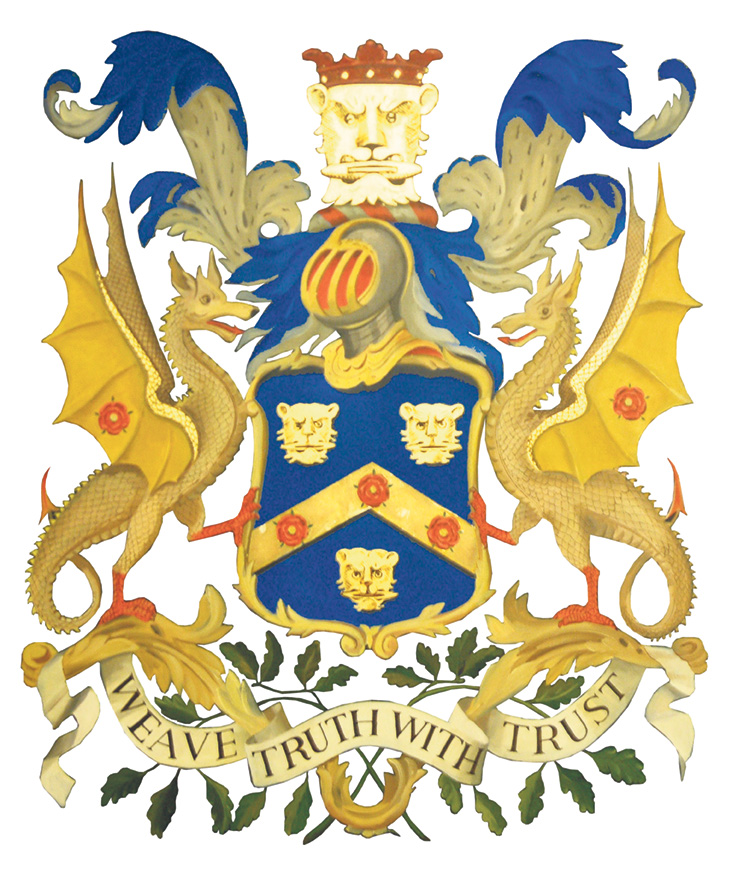Not content with having been involved with textiles for nearly 900 years, the Weavers’ Company regularly commissions pieces of textile art, reflecting the modern industry and craft of woven textiles. Each piece hangs in the Company’s offices, before going to the Victoria and Albert Museum as a gift, where it joins our previous commissions in the collection of contemporary textile art.
In response to the Covid 19 pandemic, and a lack of access to conventional looms for many students and graduates, the Company wished to commission a wall hanging which was to be made using any off loom or constructed techniques to reflect this period. The latest commission by Jonathan Mackinnon is shown here, to fulfil the brief he took inspiration from his own past and a desire for sustainability. Denim therefore became a natural choice for him to use which was combined with selvedge tape and deadsock yarn and fabric to create this bold and impactful piece.

